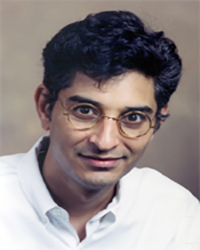
The use of drugs to treat attention deficit hyperactivity disorder has grown in the last decade, but it’s those who live in the most affluent areas of the United States who are most likely to get medication for the disorder.
Florida State University Economics Professor Farasat Bokhari was the co-author of a study published in the journal Pharmacoepidemiology and Drug Safety that found wide variations in the distribution of pyschostimulant drugs to treat ADHD. The study raised a number of questions for which the author and his colleagues received a $900,000 grant from the National Institute of Mental Health to further research the economic issues and policy decisions surrounding the use of ADHD medications.
ADHD is the most commonly diagnosed behavioral disorder in children and is considered a major public health concern, according to Bokhari. Between 3 percent and 5 percent of U.S. school-age children are estimated to have ADHD, and these children often have problems that take a toll on schools, social service agencies and health care and criminal justice systems.
"People are really polarized on this thing," Bokhari said. "States are passing laws about whether teachers can talk to parents about psychostimulant drug treatments, and there’s a lot of disagreement about both the diagnosis and the treatment of ADHD."
Some states, such as Michigan, Georgia and Virginia, have a tradition of using ADHD drugs more than others, such as California and New York. Bokhari and colleagues Rick Mayes at the University of Richmond and Richard Scheffler at the University of California at Berkeley wanted to find out why. Using data from the Drug Enforcement Administration, the researchers looked at the distribution of ADHD drugs to each county in the United States.
The researchers found that the counties where ADHD drug use was the highest had higher per capita income, lower unemployment rates, greater population density and more access to health care, meaning more HMOs and a higher percentage of people enrolled in them. Given the cost-saving objectives of HMOs, the researchers theorized that HMOs could be authorizing ADHD drug therapy because it is cheaper than counseling.
These high-use counties also had a higher ratio of younger-to-older doctors, prompting the researchers to question whether younger doctors just happen to locate in more affluent areas or whether younger doctors are more likely than their older counterparts to prescribe ADHD medication.
They also found that areas with high use have a higher student-to-teacher ratio. The researchers suggested that the greater burden on teachers may cause them to send more children to the school psychologist for screening, resulting in higher detection rates of ADHD and use of medication to treat the disorder.
In addition, the researchers found that high-use counties have, on average, slightly fewer children as a proportion of the population—a finding that seems counterintuitive given that ADHD is primarily diagnosed among children. However, Bokhari cited previous research that has shown that children of smaller families are more likely to use ADHD medication.
The findings are significant because nobody has really looked at the variation in the use of these drugs across the country, Bokhari said. He and his colleagues will next conduct a market analysis of the factors influencing the supply and demand for ADHD drugs.
"Some people who need medication aren’t getting it and some who don’t need it are," he said. "You could be playing the lottery whether your child gets the drug or not. It often seems to depend as much on where you live as on medical science."



